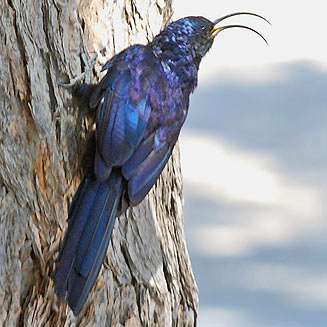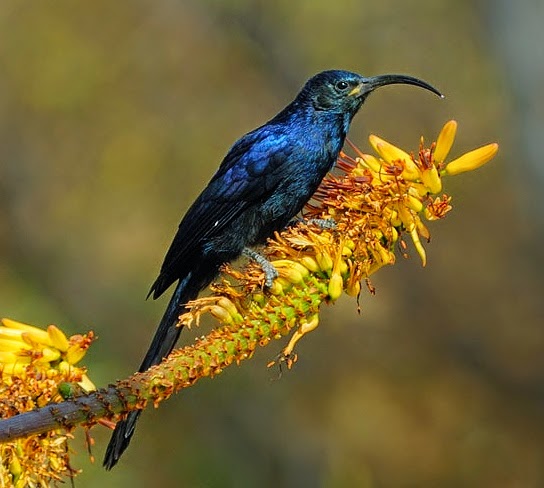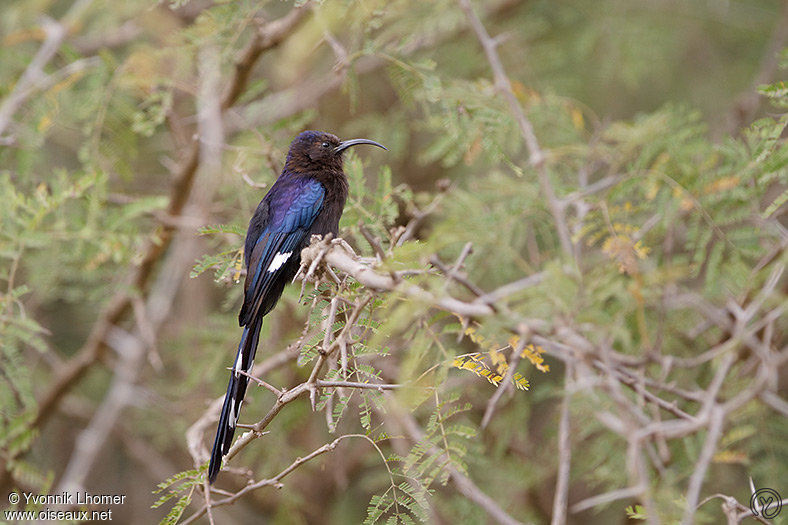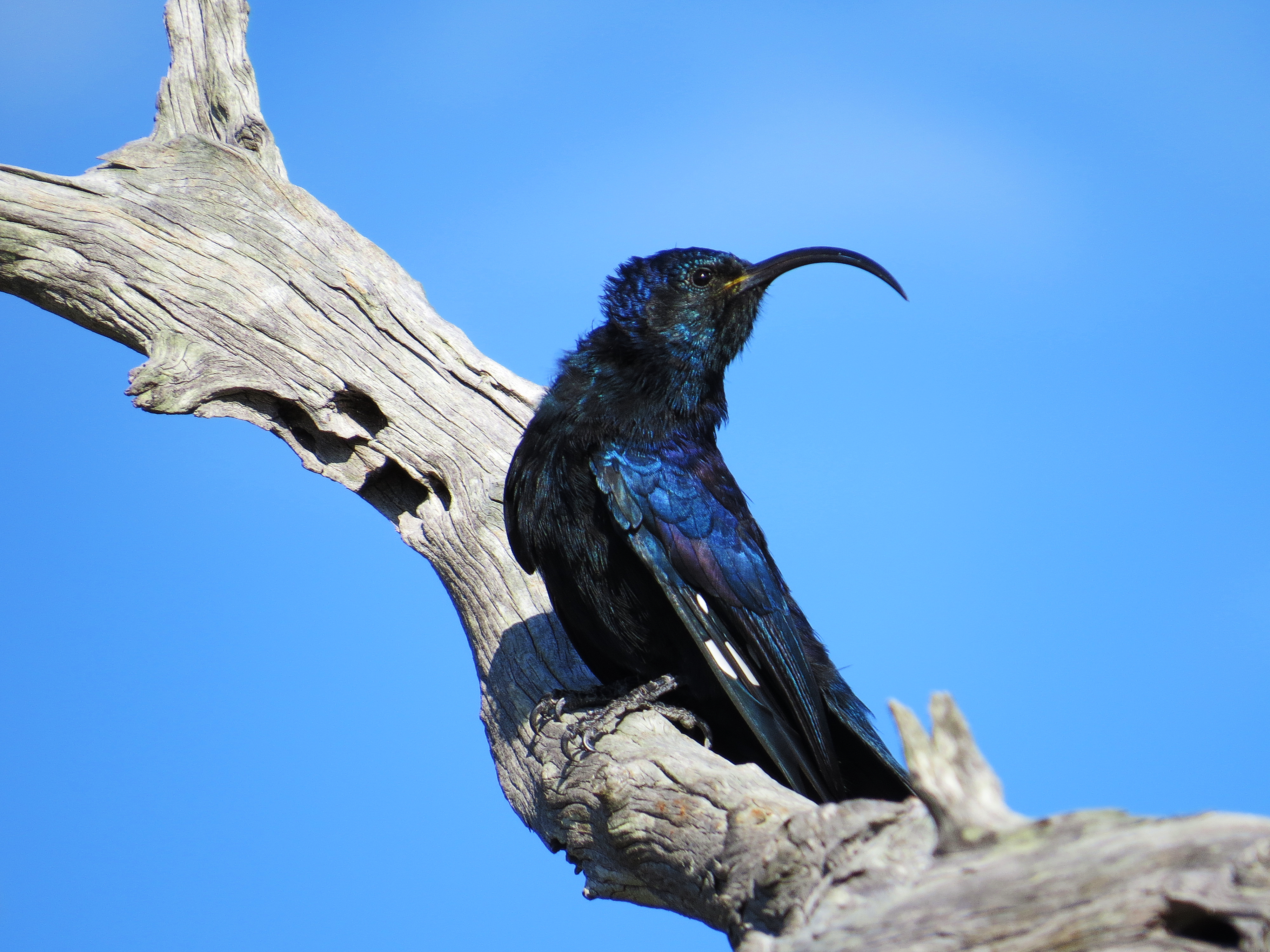
Rhinopomastus cyanomelas
SUBFAMILY
Rhinopomastinae
TAXONOMY
Falcinellus cyanomelas Vieillot, 1819, Orange River, northwestern
Cape, South Africa. Two subspecies.
OTHER COMMON NAMES
English: Scimitar-billed woodhoopoe, greater/black scimitarbill;
French: Irrisor namaquois; German: Sichelhopf; Spanish:
Abubilla-arbуrea Cimitarra.
PHYSICAL CHARACTERISTICS
10–12 in (26–30 cm), 0.8–1.3 oz (24–38 g). Small, plumage
black with purple gloss and white spots on primaries and tips
of outer tail feathers. Black bill and feet, strongly decurved bill
slightly larger in male.
DISTRIBUTION
Southeast and southern Africa. R. c. schalowi: southern Uganda,
southwest and central Kenya and southern Somalia south to
Zambia, and northeast South Africa; R. c. cyanomelas: southwest
Angola and Namibia, east to northern South Africa.
HABITAT
Open woodland, savanna, and dry thorn-scrub with a few
larger trees, to over 6,560 ft (2,000 m) above sea level.
BEHAVIOR
Solitary, in pairs, or in family groups after breeding,. Roosts in
tree hole or, if unavailable, clings to trunk. Territorial call a
mournful three to five hooting notes.
FEEDING ECOLOGY AND DIET
Mainly insect larvae and spiders, plus some other small insects,
fruit, buds, and nectar, taken among finer branches and twigs.
Probe at all angles, often inserting only the slender lower
mandible. Join mixed species foraging flocks during dry winter
months.
REPRODUCTIVE BIOLOGY
Breed as territorial pair. Nest in tree hole, usually during early
summer wet season. Lay two to four eggs, white or slightlytinted
in color, incubation 17–18 days, female and chicks fed at
nest by male, nestling period about 24 days during which female
emerges to help male. Chicks produce smelly preen oils
and feces in defense.
CONSERVATION STATUS
Not threatened. Widespread and common throughout its
range, including in a number of large national parks.
SIGNIFICANCE TO HUMANS
None known.
Photo Gallery of - Common scimitarbill




 Animalia Life
Animalia Life